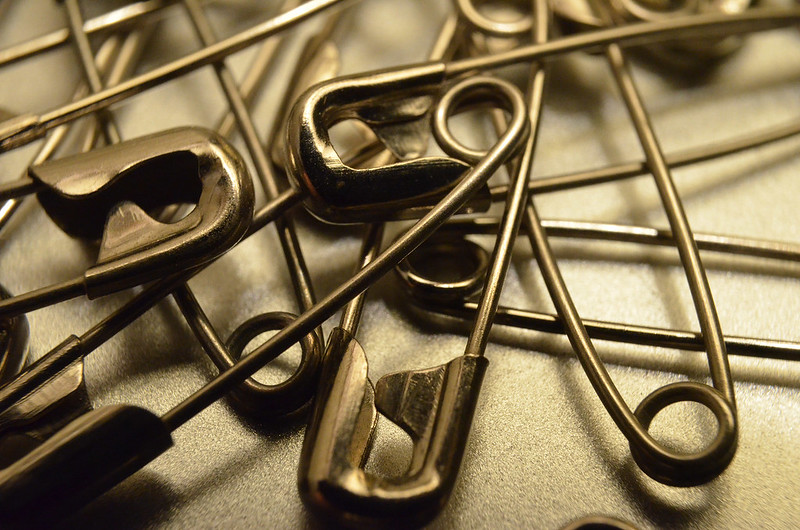Today in 1849, the US issued a patent for one of the smallest big ideas of the century: the safety pin.
And a big factor behind that little invention was paying off a big debt.
The concept here goes back way beyond the mid 19th Century.
There were pin-like fasteners back in the Bronze Age known by names like the toggle pin or fibula.
But those weren’t all that safe, at least if you managed to find the sharp bit.
Inventor Walter Hunt figured out a way to put safety in the safety pin.
The native of upstate New York had developed a number of useful devices, including early versions of the sewing machine and the fountain pen.
But his most enduring idea came for the most practical of reasons: Hunt owed draftsman J.R. Chapin $15 (which would be worth hundreds of dollars today) and he needed a way to pay the guy back.
So it’s said that he sat down with a stretch of wire for a few hours and came up with a new idea for a dress pin.
Hunt’s innovation was to put a clasp at one end of the pin, which tucked the business end of the fastener out of reach when it wasn’t needed.
It was practical, it was safe, it was easy to manufacture: Hunt was able to sell the rights to his design for $400, more than enough to pay back J.R. Chapin.
Though of course the company that bought the safety pin made millions of dollars.
And while in many ways it lives up to its name, the safety pin does have some safety hazards.
The evidence for this: there are scientific papers about the best way to remove a safety pin from a patient who ingests it, accidentally or otherwise.
Today in 1921, the birthday of Robert Wade, a chess master who proved that even top notch players can have a bad day.
In 1951, Wade was in Moscow to see the World Chess Championship, and decided to play chess against 30 students all at the same time.
Of those 30 simultaneous matches, Wade drew ten… and lost the other twenty.
Which is still better than I would’ve done.
Three Millennia of Safety Pins (The Atlantic)
Worst chess defeat (Generalist Academy)
Pin yourself to our Patreon page so you can support our show

